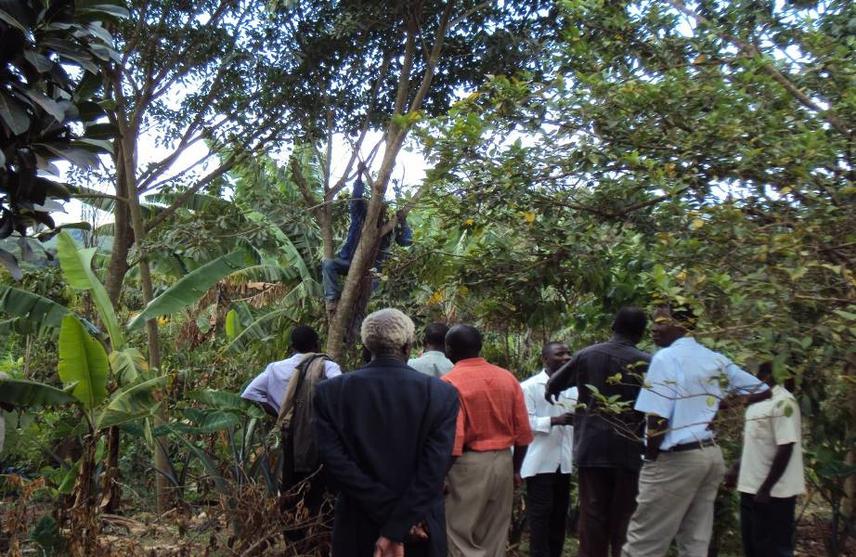Seguya Henry Kizito
Other projects
20 May 2013
Integrating Cultural Values with On-Farm Biodiversity Conservation for the Effective Conservation of Sangobay Forests in Southern Uganda
16 Jan 2018
Replicating Lessons Learnt and Integrating Livelihoods into on Farm Biodiversity Conservation through Cultural Values Approaches
The project aims to promote on farm biodiversity conservation through planting of culturally and economically viable trees. This aims to improve farm integrity which act as alternatives to Sangobay forest reserve fauna especially birds.

This project seeks to consolidate efforts started by the first phase to conserve Sangobay Forest reserve in southern Uganda. The reserve is currently under threat from different activities by local population and migrants from different parts of the country. The project focuses more on providing alternative natural resources to the local population and improving farm integrity through using cultural values cherished in the landscape. One of the major cultural value is barkcloth making. The barkcloth is made purely through application of the indigenous knowledge. However such values have been demonized and the practice is fast fading. This equally has a negative impact on conservation of Sangobay Forest since community engagement in planting culturally viable trees has reduced and they exert pressure on the forest as their major source of survival.
To contribute to reduction of this trend, this project will aim at planting more culturally viable trees especially barkcloth trees, fruit trees, meopsis emini among others. This will also involve adopting more communities to plant more trees on their farms and establishing community nursery gardens. Also the youths will be trained in barkcloth making and barkcloth making sites within the community will be re-established or rehabilitated. There are also sacred sites within the landscape and these are habitats for different fauna. These shall be mapped and conservation strategies further developed for them. Also more awareness about culture and conservation will be done within the landscape.
To have a systematic impact of the project interventions on biodiversity, avian fauna will be monitored through transects and point counts established within the intervention farms. To ensure sustainability of data collection, selected community member skills will be enhanced in bird identification and data collection. The project will also engage the community project management teams and community based organisation through improving their leadership, advocacy, financial management and other skills.
By the end of the project, the community will have access to alternatives like animal fodder, firewood from the trees planted in the first phase and other indirect benefits like increased tree cover, improved soil fertility due to increased recycling of nutrients. Also community livelihoods are expected to improve through; continuous sale of barkcloth, barkcloth making by trained youths, tree sales from nurseries among others. Also the data generated by the project will contribute to the body of knowledge and better understanding of the correlation between on-farm tree planting and alternative habitat use by forest species.